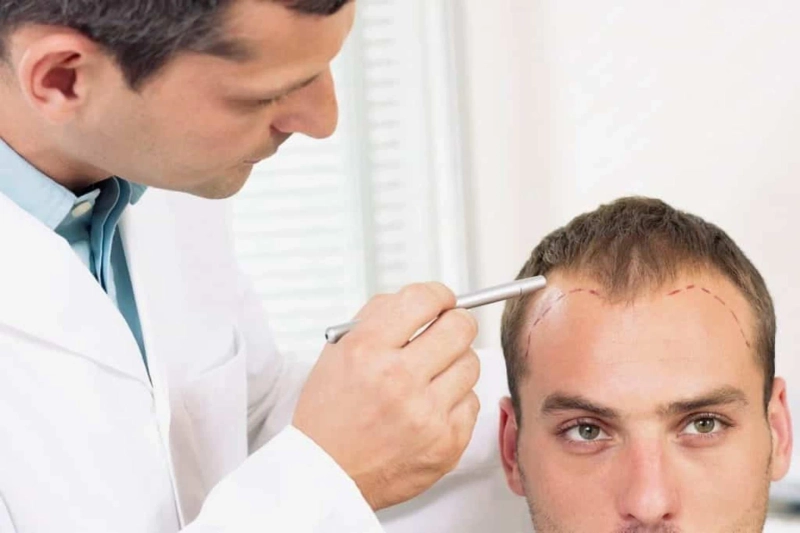Hair loss is a matter of concern for many individuals, as it can significantly impact their appearance and self-confidence. However, there is good news – hair loss can be effectively addressed through hair transplant procedures. The success and effectiveness of hair transplant treatments have made them a popular choice worldwide for those dealing with hair loss issues.
In recent years, hair transplant in Jaipur has gained significant attention due to the exceptional services provided in the city. Additionally, a few hair transplant surgeons in Delhi have earned recognition as top-notch professionals in the field globally. The competition among clinics offering hair transplant services has led to a decrease in the hair transplant cost in Jaipur.
Our clinic, Medispa, located in Delhi and Jaipur, is considered a top destination for hair transplant tourism. We have gained a reputation for providing exceptional services and state-of-the-art facilities. Our team of experienced professionals has earned global recognition in the field, making us a highly sought-after clinic for hair transplant tourism nationwide. If you are seeking the finest hair transplant clinic in Jaipur, look no further than Medispa for safe, ethical, and world-class treatment.
Hair transplant procedure
Hair transplantation is a minimally invasive surgical procedure where hair follicles are taken from the donor area and implanted into the balding area. The two main techniques used are FUT and FUE, with a single session lasting between 4 to 9 hours depending on the method and number of follicles needed. FUT involves removing a strip of hair from the donor area, while FUE involves individually selecting hair grafts using a punch-like tool. The choice between the two methods depends on factors such as age, sex, hair density, and the amount of hair needed for transplantation.
Importance of donor area
The donor region in a hair transplant procedure is where the hair grafts are extracted. It is crucial that the donor area contains hair roots that are either permanent or resistant to DHT. Typically, the back and sides of the head, chest, armpits, and beard are common donor sites for harvesting.
Importance of recipient area
The recipient zone pertains to the area on the scalp where baldness is progressing and requires intervention. The bald region is categorized according to the Norwood classification, which divides hair loss into seven stages. The determination of extracting hair grafts from the donor area is contingent upon the quantity of hair follicles present.
The selection of the donor area for a hair transplant is determined by the presence of hair roots that are resistant to DHT, ensuring long-lasting outcomes. Hair follicles that are sensitive to DHT, caused by androgenic hormones, are prone to thinning and shrinking, resulting in hair loss. Typically, these follicles are found in the front and vertex regions, which are commonly affected by hair loss.
To ensure successful transplantation, hair follicles that are resistant to DHT are chosen as donor sites. These DHT-resistant follicles lack androgenic hormone receptors, making them unaffected by androgenic hormones and resistant to hair loss. When these follicles are transplanted into areas with baldness, they maintain their qualities as permanent roots and do not experience hair loss. Therefore, the donor location is selected based on this principle, with the most commonly chosen areas being the back and sides of the head, as well as body hairs.
Points to be considered while selecting donor area:
It is crucial to carefully choose a secure donor site in order to achieve permanent and long-lasting benefits. Preserving the donor region is of utmost importance for long-term advantages, therefore, a surgeon should exercise caution when selecting a procedure and determining the number of follicular grafts to be extracted.It is essential to exercise caution in order to prevent overharvesting, as this can have a detrimental effect on the results of a hair transplant by compromising its permanence. To avoid overharvesting, it is important to consider realistic hair transplant goals when deciding on the number of grafts to be harvested.To ensure a successful hair transplant, it is crucial to avoid density depletion caused by overharvesting the donor area. This can lead to a bald appearance and unsuccessful outcomes due to a violation of the safe area. Therefore, selecting the appropriate donor area is of utmost importance. Additionally, the surgeon must exercise caution to prevent any damage to the follicular grafts, as this can hinder the regrowth of those follicles and result in a subpar outcome.The availability of donor hair from various body parts can be a viable option when the donor area on the scalp is insufficient to meet the demand for grafts in cases of advanced androgenic alopecia. However, it is important to note that hair from different parts of the body may have different qualities compared to scalp hair. Body hair transplanted to the scalp tends to be thinner and may require more grafts to achieve adequate coverage. Additionally, body hair typically grows at a slower rate than scalp hair, which could impact the final results of the transplant procedure.
"Medispa Centre" in Delhi and Jaipur has successfully utilized donor hair from various body parts to achieve positive outcomes for patients. The clinic is known for its world-class services, high standards of cleanliness and safety, and use of advanced technology to deliver optimal results at an affordable cost. Dr. Suneet Soni, an experienced surgeon at Medispa, has a unique approach to hair transplantation that involves meticulous planning at every stage of the procedure. With over 10000 hair transplants performed during his 18-year career, Dr. Soni has established himself as a leader in the treatment of pattern baldness, ensuring natural-looking results for his patients.


